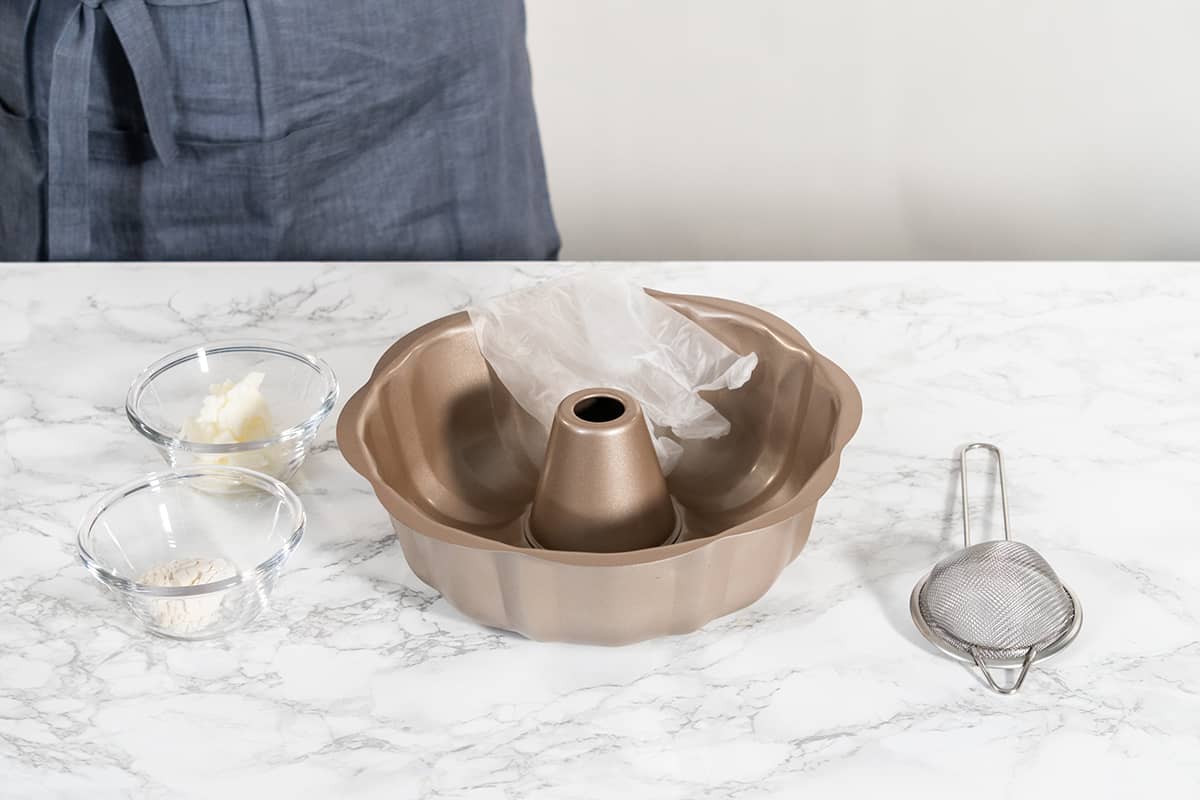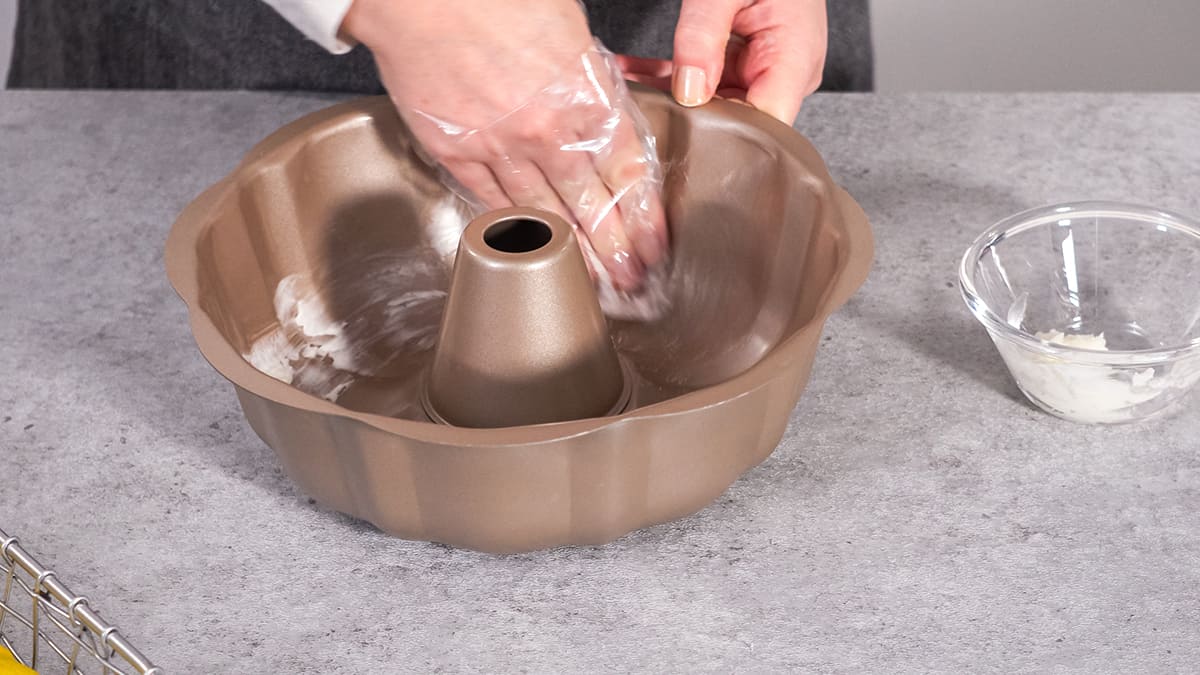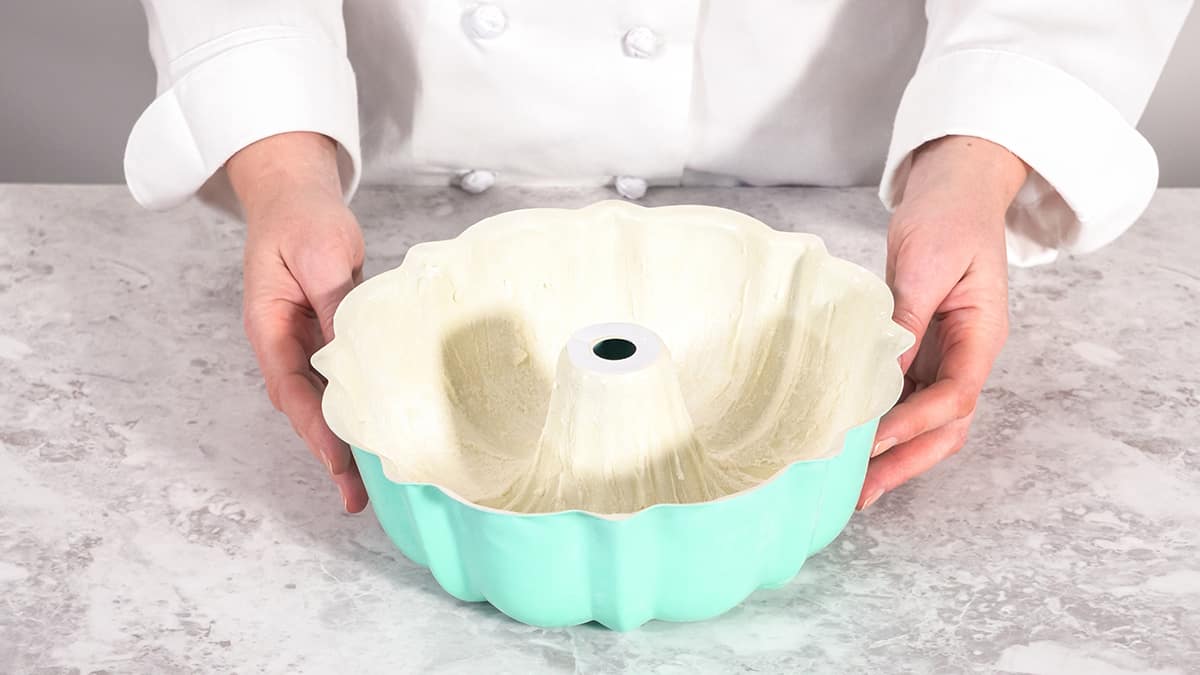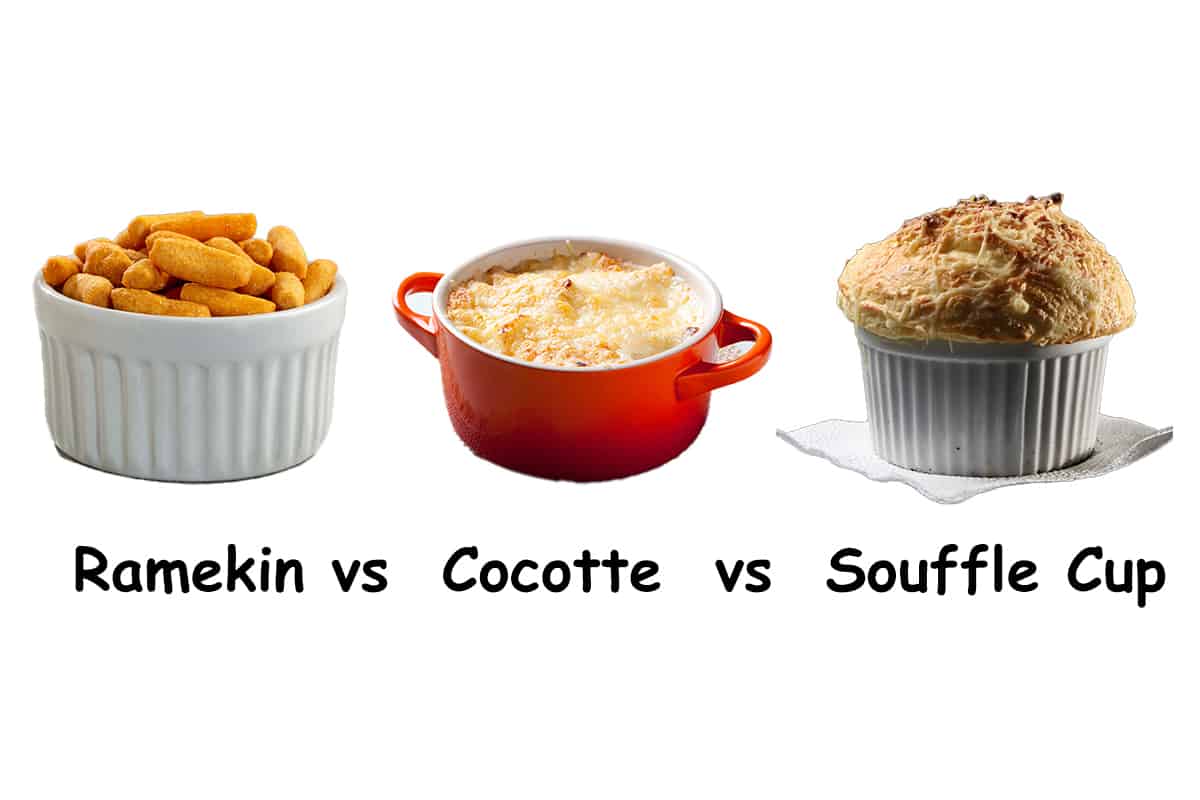Bundt cakes make excellent centerpieces or celebration cakes since they have a more intricate and interesting design than regular cakes. However, the design of bundt cake means that, unlike springform cake pans, sticking often becomes an issue.
There is nothing more frustrating than going to the effort of making a delicious cake, only to have some chunks of it stick to the pan at the end, resulting in a misshapen final cake.
The best way to avoid this baking tragedy is to know how to properly grease and flour a bundt pan, which differs slightly from the way you might grease and flour an ordinary cake pan.
Step-by-Step Bundt Pan Preparation
- Choose a suitable bundt pan that has a good non-stick surface
- Spray the bundt pan with oil after the cake batter has been made, or use a pastry brush to spread melted shortening into all the intricate parts of the pan.
- Use almond flour, sugar, or cocoa powder to flour the pan, tapping the outside of the pan to distribute it evenly and shake out any excess.
- Pour in the cake batter and bake immediately.
Bundt Pan Preparation Breakdown

You can achieve a stunning bundt cake with relative ease if you take the time to prepare your bundt pan properly. Here we look at the finer details of how best to prepare your pan so that your bundt cake slides right out of the pan in one piece.
Choosing your pan
Selecting the right pan for your bundt cake is probably the best thing you can do to ensure success in baking your cake. The best bundt pan will have an effective non-stick coating, which has not been degraded through washing. If your bundt pan has some of the non-stick coating scratched or faded, then you will need to purchase a new bundt pan.
If the pan has burnt remnants of cake on it, then this should be thrown out. No amount of grease and flour will be able to prevent this type of bundt pan from sticking to the cake.
If you are concerned about chunks of the cake coming away when you remove your bundt pan after baking, then choosing a pan that is not too intricate will be the best option. A more simple design is more likely to give you a cake in one whole piece at the end of the process.
Greasing the pan
Greasing the pan is an essential step in baking a bundt cake, even if the pan has an excellent non-stick coating.
Grease type
The best grease to use is a spray that is 100% oil. You can buy an oil spray from the grocery store, or you can put your own oil into a spray dispenser bottle. Canola oil or sunflower oil works well. Avoid using baking sprays that are not 100% oil. These are often sold as ‘non-stick’ sprays, but they can contain additives that will cause the lining of the pan to degrade over time.
They can also cause build-up on the inside of the pan, which will render the non-stick coating useless. Spray oil is the easiest way to grease a bundt pan because you can generously spray the oil into the pan to ensure it reaches every part of the surface, including the more detailed areas.
If you don’t have a spray bottle, you can drizzle oil into the bundt pan and then spread it around using a pastry brush. Alternatively, use a pastry brush with melted shortening. When using the brush method, take extra care to ensure all of the nooks and crannies are coated so that no part of the cake will stick to the pan.
Grease timing
Most baking recipes advise you to grease the pan at the beginning of the process, at the same point when you turn on the oven to preheat it. When baking a regular cake or pie, this works well. However, it is not suitable for baking a bundt cake; the reason for this is that the grease is in a liquid form, and if you apply the grease too early, then it is going to have time to seep to the bottom of the pan.
This will leave the walls of the bundt pan with only a minimal amount of grease, and the base of the pan will be flooded with grease. The typical outcome when greasing a bundt pan too soon is that the walls of the cake will stick to the pan, and the crown of the cake won’t cook properly.
This can be avoided by waiting until the last possible minute to grease the pan. After you have prepared the cake batter mixture and the oven has reached temperature is the best time to grease the pan.
Apply the grease (and a flour coating if you wish), then pour in the cake mixture and put it straight into the oven. This will ensure that the bundt cake has the most even coating of grease possible, preventing the likelihood of any sticking.
Flouring the pan
Flouring a bundt pan is a traditional way of coating the pan to help prevent sticking, but this is a controversial topic amongst experienced bakers. Some bakers feel that flouring the pan is a necessary step for the perfect bundt cake, while others believe that the flour actually encourages more sticking.
If you have been making bundt cakes successfully while using flour as a coating on top of your grease, then you should continue to do so. However, if you are new to baking bundt cakes then it is recommended to avoid using flour because it can make your bundt cake appear patchy or give an unusual texture to the surface of the cake.
Instead, if you want to add an additional layer between the grease and your cake batter to help prevent sticking to the bundt pan, then use almond flour, cocoa powder, or sugar. Sugar works well on any type of bundt cake and will give the outer edge of the cake a subtle crunch and glazed look.
Almond flour is a good option for light-colored bundt sponges, while cocoa powder is a better option for chocolate bundt cakes. These powders give the cake batter something to stick to, instead of sticking to the pan walls, to help the cake come away from the mold more easily.
Use a sieve to apply an even sprinkling of your chosen flour on top of the grease, patting the outer sides of the pan to disperse the coating across all of the surfaces. Finally, turn the pan upside down and pat the base of it to remove any unwanted excess, then pour the cake batter directly into the pan before baking.
Can I Use Butter to Grease a Bundt Pan?
Butter should not be used to grease a bundt pan because the milk contained in butter can actually cause the cake to stick to the pan.
Avoid using real butter for greasing bundt pans, and instead use melted shortening, oil, or melted vegan spreads which are typically made from vegetable oils. Oil in a spray bottle will give you the best coverage and is also the quickest to apply.






